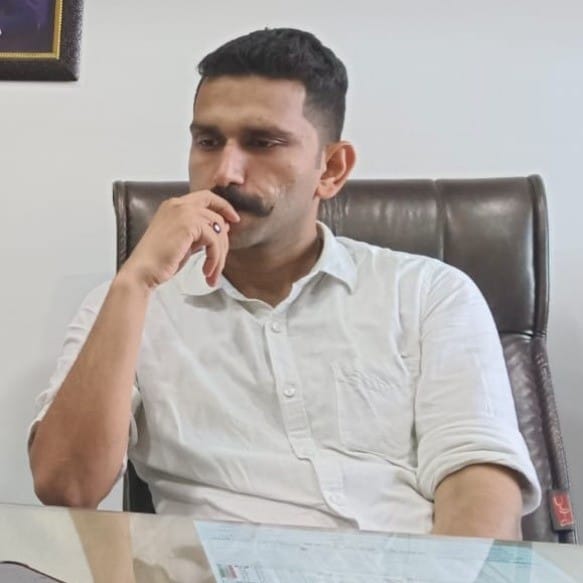The Bayer Corporation v. Union of India case emphasizes the legal framework for granting compulsory licenses under the Indian Patents Act, 1970, particularly to ensure that essential medicines are accessible at affordable prices. The Bombay High Court upheld the Controller’s decision to grant a comp

“Compulsory licenses can be granted to ensure affordable access to essential medicines, prioritizing public health over patent rights.”
Citation: AIR 2014 Bom 178
Date of Judgment: 15th July, 2014
Court: Bombay High Court
Bench: Mohit S. Shah (C.J.); M.S. Sanklecha (J)
Facts
- Bayer corporation was incorporated under the laws of the United State of America (USA). They invented and developed a patented drug which is used in the treatment of patients suffering from Kidney cancer i.e. Renal Cell Carcinoma (RCC) and liver cancer i.e. Hepatocellular Carcinoma (HCC).
- After the invention of the patented drug in 1999, the petitioner applied for a patent in the U.S.A. Thereafter, in 2000 the petitioner applied for an international patent under the Patent Co-operation Treaty (PCT). On 5th July, 2001 applied in India for grant of the patent to the patented drug in India which was granted on 3rd March, 2008 by the office of the Controller.
- On 6th December, 2010 Natco- a drug manufacturer in India approached the petitioner for grant of voluntary license for the purpose of manufacturing and selling the patented drug in India. Natco sought a voluntary license to manufacture and sell in India the patented drug under its brand name at a price of less than Rs. 10,000/- per month of therapy as against the price of Rs. 2,80,428/- per month of therapy charged by the petitioner. This application was rejected by the petitioner on 27th December, 2010.
- On 29th July, 2011 i.e., after the expiry of three years from 3rd March 2008, Natco applied to the controller for grant of Compulsory License under Section 84(1) of the Act.
Decision of the Controller of Patents (Controller)
On 9th March 2012, the Controller allowed the application of Natco and directed it to pay to the petitioner royalty at 6% of its net sales of the patented drug which was allowed to be sold at price of Rs. 8800/- for 120 tablets for a month of treatment. Moreover, the grant of Compulsory License to Natco was non-exclusive, non assignable and for the balance term of the patent.
Decision of the Intellectual Property Appellate Board (Tribunal)
The Tribunal rejected the petitioner’s application for stay of the order passed by the Controller. It upheld the order of Controller while increasing the royalty payable by Natco to the petitioner from 6 to 7% of the sales of the patented drug under its brand name. Moreover, it took a view that the requirement of working of the patented drug in India could also be satisfied by importing the patented drug on the patent holder satisfying the authorities under the Act that the manufacture of the patented drug was not possible in India.
Decision of the Bombay High Court
The High court upheld the order of controller as well as tribunal regarding granting compulsory licence under Section 84 of the Act to Natco.
Key legal issues discussed
1. Did the applicant (Natco) make efforts to obtain a voluntary licence from the Patent holder (Bayer) as required under Section 84(6)(iv) of the Patents Act, 1970?
Yes
There are two conditions precedent to consider an application for Compulsory Licence. First, 3 years should have elapsed from the grant of the patent before an application can be made is satisfied1. Second, efforts have to be made to obtain voluntary licence from the patent holder on reasonable term and conditions.2 It could be observed that effort was made by Natco to obtain for voluntary licence from the petitioner through letter dated 6th December, 2010.
The petitioner’s response dated 27th December, 2010 to Natco’s request for a voluntary licence clearly records the refusal. The so-called window in the petitioner’s response for Natco to approach within 14 days is illusory as it is open only if the Natco had anything to add to the application already made.
2. Whether the petitioner has met the reasonable requirement of the public in respect of the patented drug under Section 84(1)(a) of the Patents Act, 1970?
No
The initial burden is admittedly on the applicant i.e. Natco to make out prima facie to the satisfaction of the Controller and only after that the petitioner is required to establish with facts in its possession that the reasonable requirement of the public is not satisfied.
Court held that the reasonable requirement of the public under Section 84(1)(a) of the Act is not satisfied even if one accepts the figures of the petitioner in the form of Globocan 2008 figures and affidavit of the doctors. This could also not be achieved even if the patented drug supplied by the infringers namely Cipla is taken into account.
Moreover, court observed that,
“the Parliament has deliberately used the word “adequate extent”.3 The aspect of adequate extent would vary from article to article. So far as luxury articles are concerned the meeting of adequate extent tests would be completely different from the meeting of adequate extent tests so far as medicines are concerned. In respect of medicines the adequate extent test has to be 100% i.e. to the fullest extent. Medicine has to be made available to every patient and this cannot be deprived/scarified at the altar of rights of patent holders.“4
In fact, this is the mandate of Parliament by providing for Compulsory Licensing. This would also be in accord with Doha Declaration 2001 which reiterates flexibility to member countries so as to ensure access to medicines for all. Undisputedly the requirement of all the patients is not being met by the patented drug.
3. Was the patented drug available to the public at a reasonably affordable price as required under section 84(1)(b) of the Patents Act, 1970?
No
Section 84(1)(b) read with Section 90(1)(iii) clearly mandates that the Controller should ensure that the patented drug is available at a reasonably affordable price. However, the Act itself does not bestow any powers of investigation with regard to the reasonably affordable price. Thus, the same has to be arrived at on the basis of the evidence led by the parties before it of their respective prices. The obligation of the authorities under the Act is with regard to grant, control and revocation of patent and not price determination of the patented invention. It is for this reason that Section 90(1)(iii) of the Act on which reliance is being placed does not direct the Controller to fix the reasonably affordable price but only directs the Controller to endeavor to ensure/secure the patented article is available at reasonably affordable prices.
In the present case the price at which the petitioner is selling the patented drug is at about Rs. 2,84,000/- per month of therapy and the applicant was offering the same at Rs. 8,800/- per month of therapy. In such a case the reasonably affordable price has to necessarily be the price of the applicant as it by itself establishes that the price of the petitioner is not a reasonably affordable price.
Court observed in Para 24 that,
“the patented drug is classified as an orphan drug in the U.S.A. As an orphan drug, the petitioner is entitled to be reimbursed either by tax credit or otherwise to the extent of 50% of its costs incurred on research and development of the patented drug. However, the petitioner has not made available either before the Controller or before the Tribunal or before us the quantum of reimbursement received. The above figures would establish the total costs incurred by the petitioner on research and development of the patented drug. This could have formed the basis to decide the reasonable price at which the petitioner could make the drug available to the public in India. The petitioner has not chosen to produce the above best evidence before the authorities. An adverse inference, must necessarily be drawn against the petitioner.”
Therefore, no fault can be found with the impugned order holding that the patented drug is not available to the public at a reasonably affordable price.
4. Whether the application for compulsory licence ought to have been adjourned by the Controller?
No
Section 86 of the Act which provides that adjourning application for compulsory licence has to essentially satisfy two conditions which are as follows:
a) The time which has lapsed since the patent was granted and when an application for compulsory licence was made was insufficient to enable the patent holder to work the patented drug in India on a commercial scale; and
b) Patent holders should have taken steps towards working the patented drug in India on a commercial scale with promptitude.
In the present case, the petitioner has led no evidence before the authorities to indicate what steps they have taken and with what promptitude the same have been taken for the purposes of working the patent in India after 2008. Further, petitioner has led no evidence before the authorities in support of its submission that application for compulsory licence should be adjourned in view of the petitioner satisfying the requirement of Section 86 of the Act.



